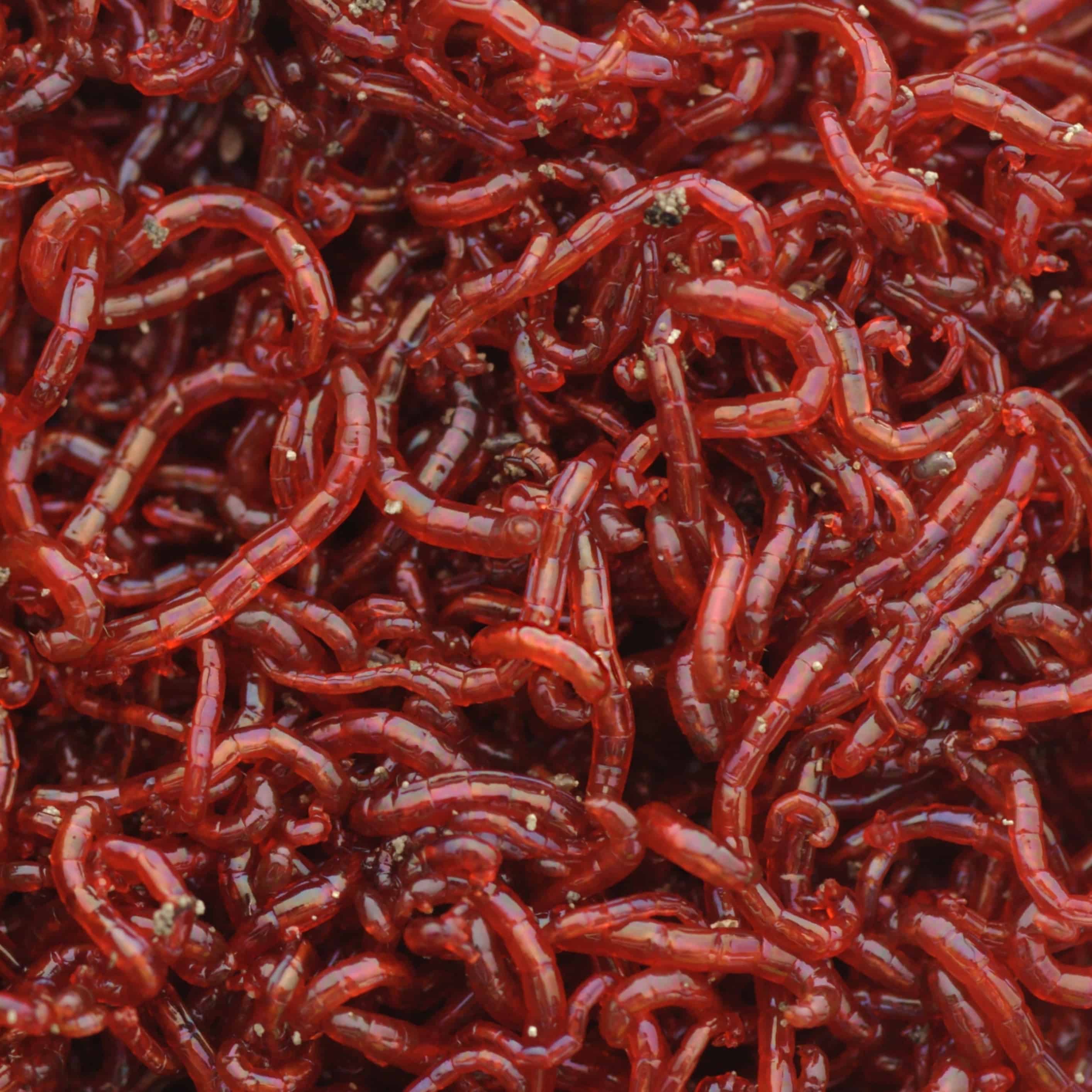
Caring for a pond can be a task that gets put to the wayside more often than not, which is generally fine as ponds are an ecosystem on their own that can survive longer than you expect. However, when you finally go to clean the pond filter, you might spot little red worms inside it. What are these worms?
The little red worms you find in your pond’s filter are bloodworms. These worms are the larvae of a midge, and if they are in small amounts, they will not harm your filter or your pond in any way. These worms can be beneficial to your pond, but you can get rid of them if you want to.
Are midges harmful to your pond and you? How long do these small red worms live? Are these worms dangerous to humans? How do you get rid of these worms? Let’s find out!
Pro Tip: If you’re tired of wasting money and making costly mistakes on the koi-keeping hobby or are thinking about buying koi fish but don’t know where to start, I strongly suggest you check out this ebook. I recently read this ebook, and it contains SO much useful information, such as:
- 3 proven steps to identify koi fish diseases
- WARNING: 3 things you should NEVER do when it comes to caring for koi
- When to seek professional help when it comes to looking after your koi
What Are The Small Red Worms In My Pond Filter?
Cleaning a pond’s filter is generally a job that gets put off as long as possible as it can sometimes be an unpleasant job. Don’t worry; we have all been there. If you leave your ponds filter for slightly too long, and when you finally clean it, you might notice that some small red worms have made your ponds filter their home.
What are these small red worms in your pond filter? These aquatic worms are called bloodworms, and they are common in ponds, especially pond filters. It is common to see these worms clumped together in a ball, and a sudden influx of them means that they have just hatched.
When you first see these worms in your ponds filter, especially if you are a new pond owner, it can be quite scary, and you will have many questions about these little red worms. So, let’s go through all the information you should know about bloodworms.
Where Do These Red Worms Come From?

Bloodworms are the larval stage of a bug called the midge. In this larvae form, the blood of the worms is rich in hemoglobin, which is what gives these worms their blood-like appearance that can be alarming to many pond owners.
There are two types of these midges that are common in the United States, Europe, and Africa. However, the non-biting midges are the most common. The adult midges will lay their eggs on the water’s surface in your pond.
When these eggs hatch into bloodworms, the worms will attach themselves to solid surfaces in your pond, like the filter, where they can then get the algae, bits of sediment, and any other bits of food and plant matter that float close to them in the pond.
These worms will stay attached to these solid surfaces until they are developed enough to move on to the subsequent stage of their life cycle.
It is important to note here that a huge influx of bloodworms in your pond could indicate poor water quality, so you should test your pond’s water and fix it to prevent any problems that could affect the health of your pond fish.
Are These Midges Harmful?
When most people hear about midges, the first question that pops into their minds is, are these midges harmful? As mentioned, midges come in two varieties, the non-biting and the biting varieties.
The non-biting midge varieties are harmless to humans and animals, so you, your pets, and your fish will hardly notice that they are around you. The biting midge varieties will bite both people and animals, but their bites tend to be harmless.
Most people will equate their bites to what you would feel if a mosquito bit you. Their bites can be itchy, but this generally goes away within a day. Some people can be allergic to the bites of these midges, which can cause the itchiness of the bites to be severe, but this should be the only reaction.
How Long Do The Red Worms Live?
So, bloodworms are only one stage in the midges life cycle, meaning they don’t die but rather transform into their next phase of life when they have developed enough.
The length of time they stay in their worm stage can depend on the quality of your pond’s water and the amount of food available to them in your pond. Bloodworms will stay at this stage in their life cycle for between 2 and 4 weeks.
After which, they will swim to the water’s surface and begin their change into their adult stage of life, being the midge. These midges, especially the non-biting ones, do not live for very long as adults. They will mate, find a pond or water source, lay their eggs, and die.
Will The Small Red Worms Damage My Pond Filter?
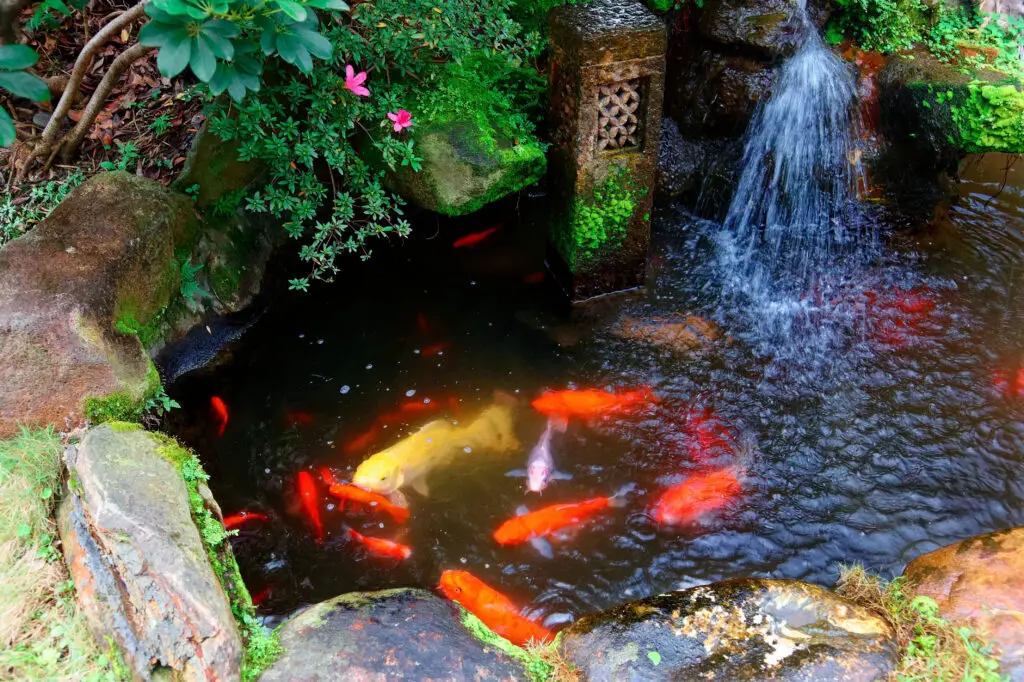
When people find these small red worms in their filters, they are concerned about the impact and possible damage the worms can do to their filters. So, will the small bloodworms damage your pond filter, or are they fine there?
The good news is that the small bloodworms will not damage your filter in any way unless there is an extraordinarily large amount of them packed into your pond’s filter at once. These bloodworms can even provide some benefits to your pond and pond filter that may make you want to keep them around.
The bloodworms can help you keep your pond clean as they consume the decaying matter at the bottom of your pond. So, if these worms are in your filter, they will help your filter clean the water even better by consuming the small particles of plant matter and waste in the filter.
Are The Small Red Worms Dangerous To Humans?
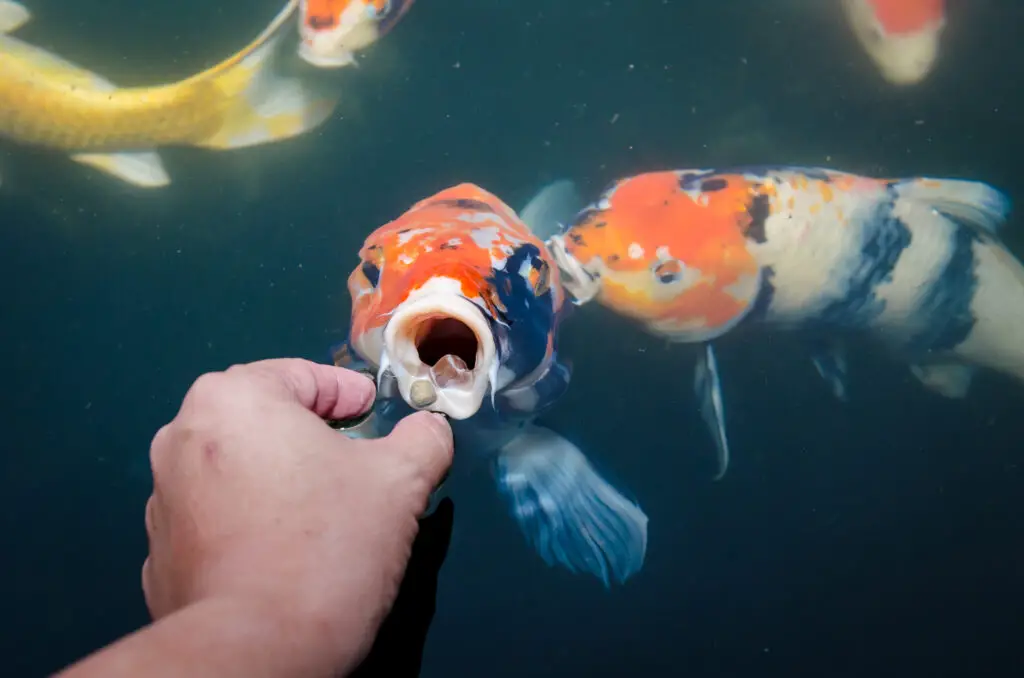
Finding bloodworms in your filter can be alarming, as you need to clean the filter and interact with it, most often with your bare hands. So, are bloodworms dangerous to humans, or can you go about cleaning your filter without worrying?
Bloodworms are harmless to humans, there are the occasional few that will bite you, but these bites are nothing to be concerned about as they won’t harm you in any way. You can clean your filter knowing you are safe, and the worms won’t hurt you.
Bloodworms are even safe for other pets, with your dog or cat having no negative side effects if they eat them. Your pets might throw up if they eat too many bloodworms at one go, but a few at a time will do no damage.
How To Get Rid Of Red Worms In My Pond?
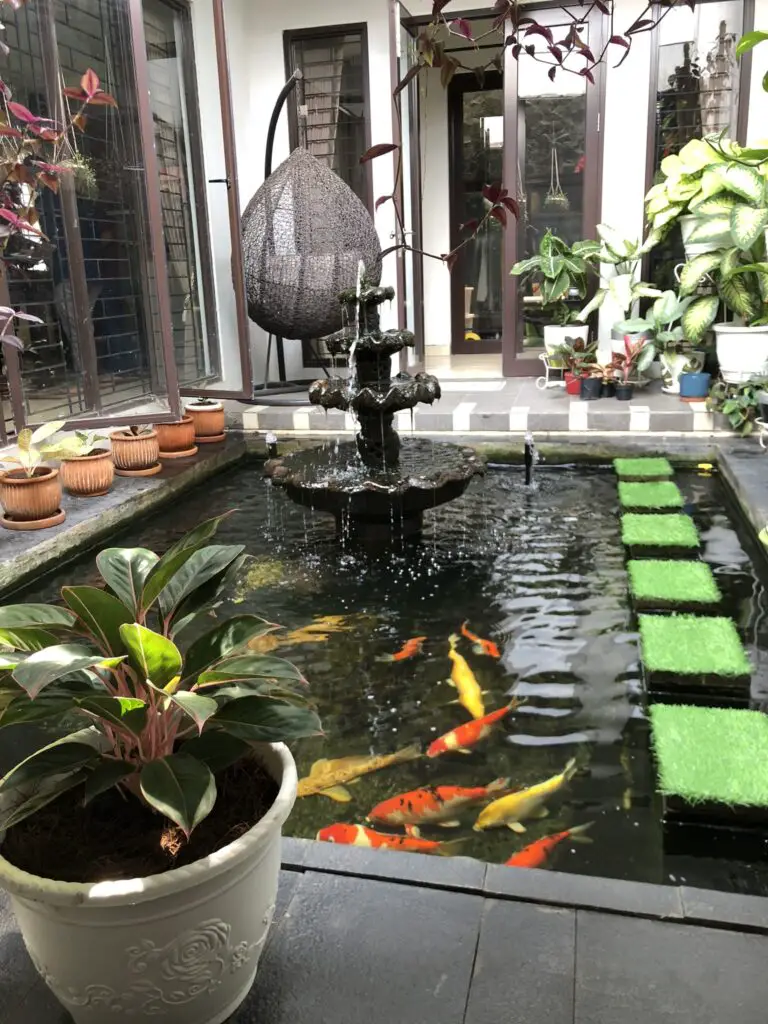

While bloodworms are not harmful to you, your pond, or your fish that live in the pond, and the worms can help in your pond’s ecosystem; they can become a nuisance. If the blood worms begin to overrun your pond, this can lead to some significant problems.
For example, if the blood worms begin dying off, they can start decomposing in your pond. This can lower the quality of your pond’s water and start affecting the health of the fish and plants that live in it.
When many of these worms begin to decompose, this can also make your pond stink pretty bad. So, before your pond reaches this stage, you need to rid your pond of the excess bloodworms as fast as you can before the worms start dying.
Thankfully, there are a few methods you can use to rid your pond of these worms before problems start to arise. Let’s go through these methods, so you can get your pond’s ecosystem back to perfect health.
Remove The Worms Manually
One of the ways you can remove bloodworms from your pond is to remove them manually. You can scrape the worms off your pond filter and rocks and place them into a bucket.
Cleaning your filter regularly will also help prevent the blood worms from returning to your pond and prevent you from repeating the removal process. You can also use an aquatic vacuum in your pond. This will help remove both the eggs of the midges and the bloodworms that have already hatched from the bottom of your pond.
You could also use a skimmer to remove any bloodworms at the water’s surface. All this will help reduce the bloodworm population in your pond and pond filter.
Another thing you could do is to reduce the adult population of midges under control to help prevent them from laying too many eggs in your pond, to begin with. You can do this by placing some bug zapping lights around your property.
Place them a fair distance from your pond, as you don’t want the lights attracting the midges to your pond. You will need to regularly clean out the bug zap traps on the trap lights to prevent them from malfunctioning, but they work well in preventing the midges from laying their eggs in your pond.
Use A Natural Biological Control Method
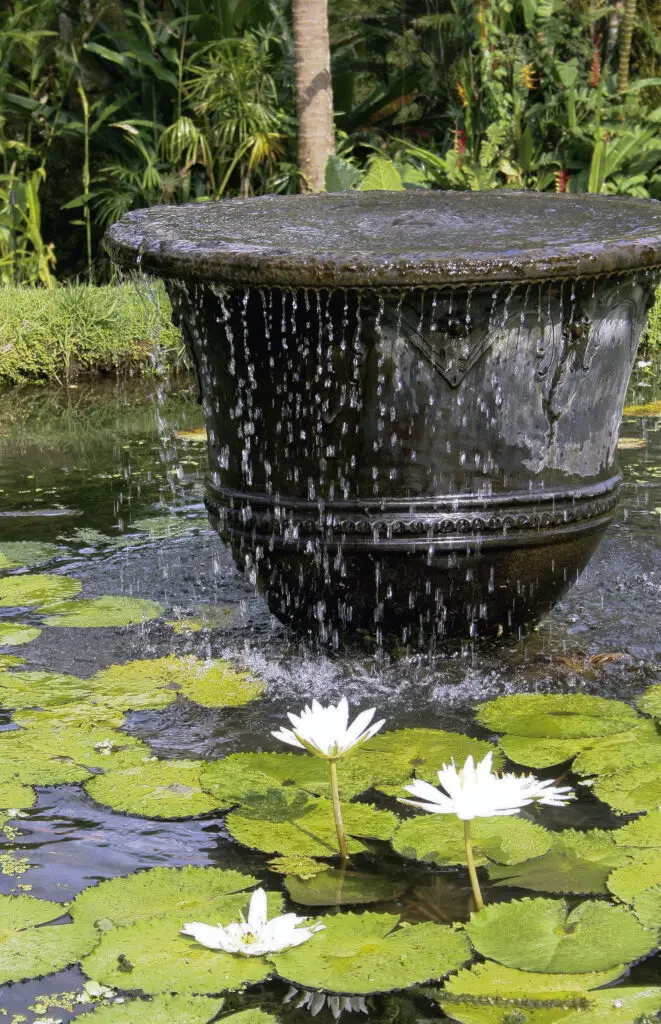
Another natural but useful method of bloodworm control that is relatively easy to implement is to use the biological control method. This will not only help control the bloodworms in your pond and filter, but it will add some lovely new creatures to your pond’s ecosystem.
The natural biological bloodworm control method is to attract bloodworm and midge-eating creatures to your pond. You can plant some marginal aquatic and floating plants in your pond and along the shore of your pond. This will attract frogs, dragonflies, birds, and damselflies to your pond.
These creatures will help keep your pond free of bloodworms as they enjoy eating the bloodworms themselves and the adult midges. If you don’t want these animals around your pond, then you can use a natural larvicide that will only target aquatic larvae insects like midges.
In the United States, there is only one EPA-approved larvicide for midge larvae. This larvicide is Aquabac Xt. This larvicide is a pure biological larvicide that will not harm anything else in your pond. This product contains a bacteria called BTI or Bacillus thuringiensis israelensis that the bloodworms will eat but cannot digest.
When the bloodworms consume this bacterium, the bacteria will form a thick protein crystal in the worms’ digestive tracts. This protein crystal will kill the bloodworms within a few hours or one day.
Use A Chemical Control Method
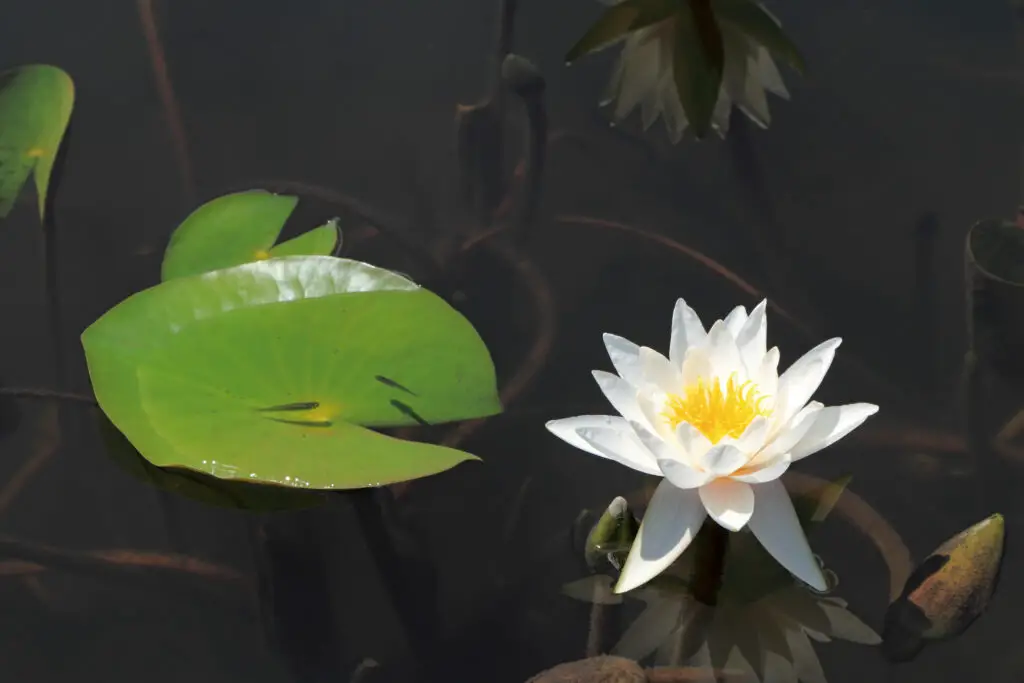
If the other two methods that we have mentioned don’t sound good to you or you are unable to use them, then there is a chemical option available that could help rid your pond of bloodworms. However, the chemical option does require you to have a professional treat your pond, as these chemicals are not sold for public use.
These chemicals also can harm your fish and the environment your pond is located in and affect the overall quality of your pond’s water if not used correctly. This can lead to much bigger problems than the bloodworms could ever cause you, so this treatment method is not recommended unless you have a severe bloodworm infestation.
So, if you still want to use this method, you can contact your local pound professionals, and they will come out and help you rid your pond of bloodworms using their stronger chemicals.
Can Your Fish Eat Red Worms?
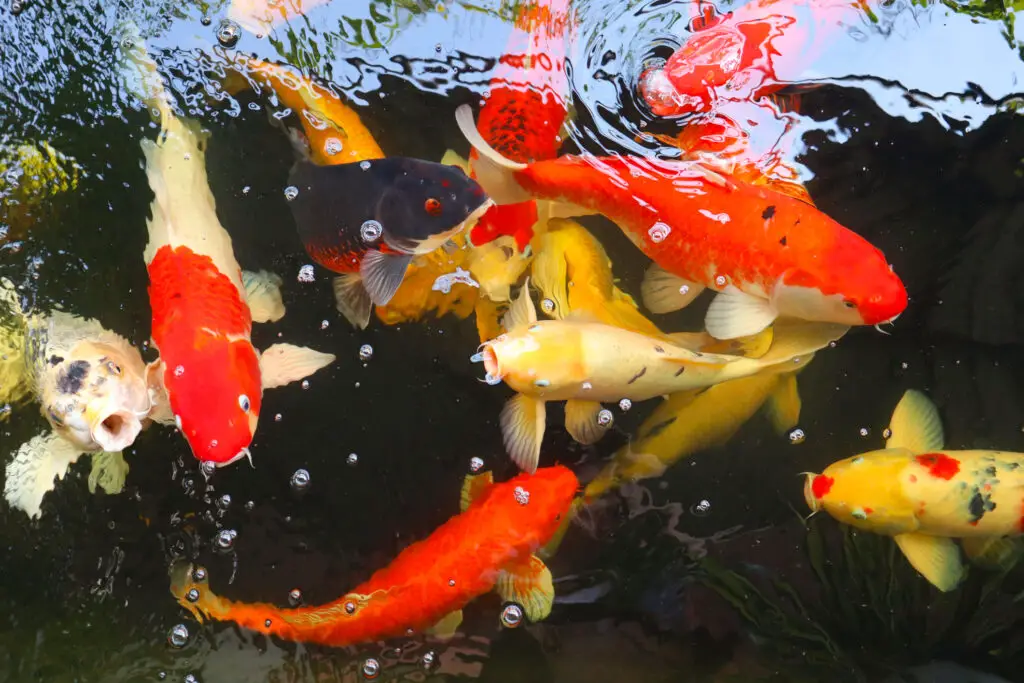
If your pond has a slight bloodworm problem, the fish you have in your pond might be able to help your fix this issue. Koi fish love snacking on bloodworms that they find in their pond, so they will eat quite a few of the worms that make their way into the pond.
When your Koi fish eat the bloodworms they find, this is perfectly natural, and the bloodworms will not harm your Koi fish in any way, so there is nothing to worry about. There are several other fish that also enjoy eating bloodworms apart from Koi.
If your pond is starting to develop a bloodworm problem, you can also introduce some fish into your pond that love eating bloodworms. There are many fish that you can choose from for this purpose. Some fish that love eating bloodworms include goldfish, Orfe, and catfish.
These fish also thrive in the same water conditions as Koi fish, so they will have no issue adjusting to the water in your pond. However, you should ensure that the catfish and Orfe that you introduce into your pond are the same size as your Koi, or they might become a snack for your Koi fish along with the bloodworms.
Conclusion
So, there you have it; the little worms inside your pond filter are bloodworms, and, in small quantities, they are more helpful to your filter than harmful. You only need to start worrying about these worms when they seem to be taking over your entire pond, as this could indicate poor water quality in your pond.
Apart from this, the little red worms are harmless to you and all your animals that might come into contact with them. Your fish will probably enjoy them as a snack, so feed them to your fish if you find them. Good luck with the bloodworms in your pond!
References
https://pondinformer.com/what-are-red-worms-in-pond-filter/
https://pondinformer.com/pond-fish-that-eat-mosquito-larvae/
https://homeguides.sfgate.com/bloodworm-larvae-koi-ponds-51498.html
https://helpusfish.com/50/little-black-worms-pond-filters.html

